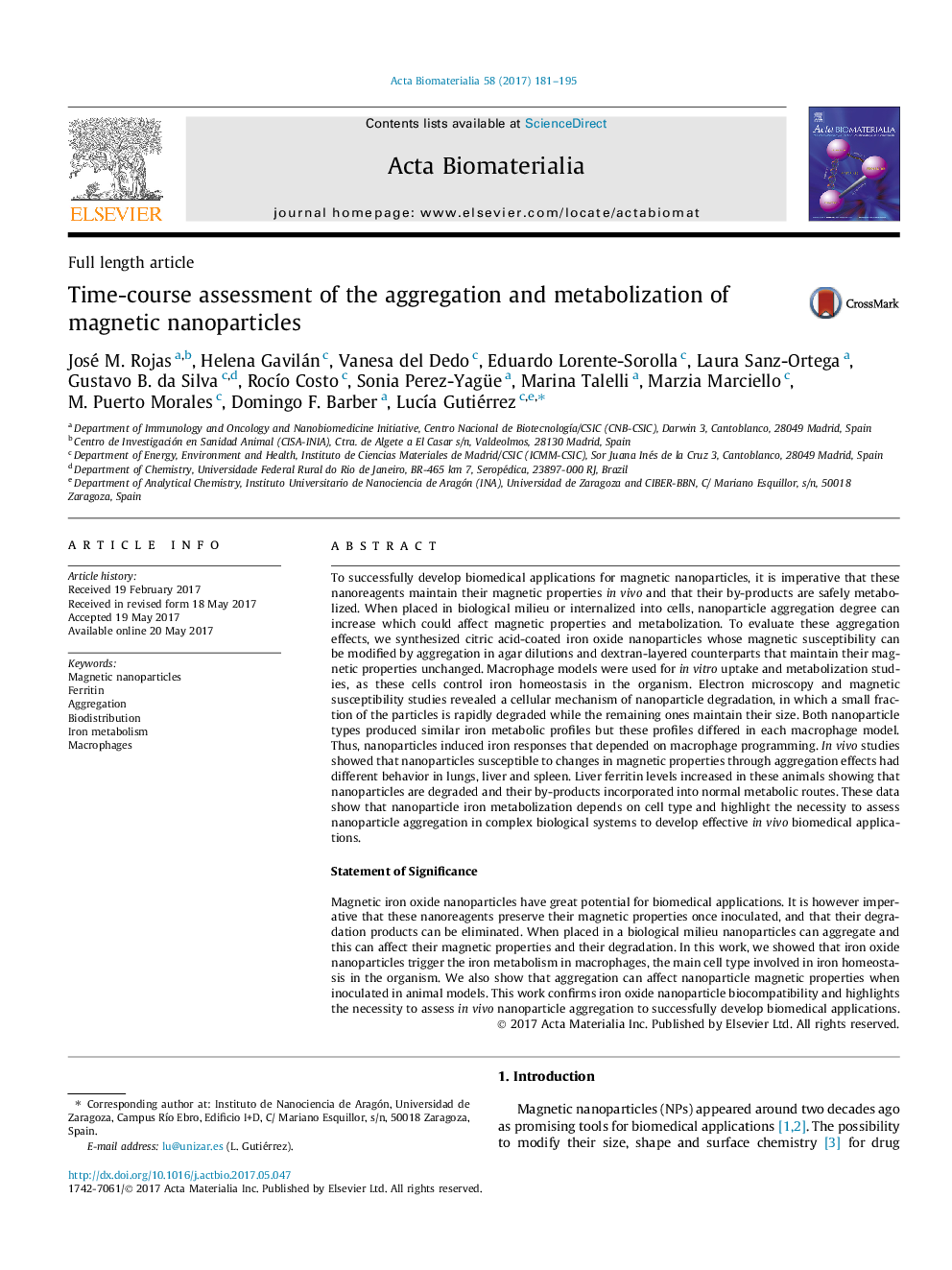| کد مقاله | کد نشریه | سال انتشار | مقاله انگلیسی | نسخه تمام متن |
|---|---|---|---|---|
| 6449391 | 1415928 | 2017 | 15 صفحه PDF | دانلود رایگان |
To successfully develop biomedical applications for magnetic nanoparticles, it is imperative that these nanoreagents maintain their magnetic properties in vivo and that their by-products are safely metabolized. When placed in biological milieu or internalized into cells, nanoparticle aggregation degree can increase which could affect magnetic properties and metabolization. To evaluate these aggregation effects, we synthesized citric acid-coated iron oxide nanoparticles whose magnetic susceptibility can be modified by aggregation in agar dilutions and dextran-layered counterparts that maintain their magnetic properties unchanged. Macrophage models were used for in vitro uptake and metabolization studies, as these cells control iron homeostasis in the organism. Electron microscopy and magnetic susceptibility studies revealed a cellular mechanism of nanoparticle degradation, in which a small fraction of the particles is rapidly degraded while the remaining ones maintain their size. Both nanoparticle types produced similar iron metabolic profiles but these profiles differed in each macrophage model. Thus, nanoparticles induced iron responses that depended on macrophage programming. In vivo studies showed that nanoparticles susceptible to changes in magnetic properties through aggregation effects had different behavior in lungs, liver and spleen. Liver ferritin levels increased in these animals showing that nanoparticles are degraded and their by-products incorporated into normal metabolic routes. These data show that nanoparticle iron metabolization depends on cell type and highlight the necessity to assess nanoparticle aggregation in complex biological systems to develop effective in vivo biomedical applications.Statement of SignificanceMagnetic iron oxide nanoparticles have great potential for biomedical applications. It is however imperative that these nanoreagents preserve their magnetic properties once inoculated, and that their degradation products can be eliminated. When placed in a biological milieu nanoparticles can aggregate and this can affect their magnetic properties and their degradation. In this work, we showed that iron oxide nanoparticles trigger the iron metabolism in macrophages, the main cell type involved in iron homeostasis in the organism. We also show that aggregation can affect nanoparticle magnetic properties when inoculated in animal models. This work confirms iron oxide nanoparticle biocompatibility and highlights the necessity to assess in vivo nanoparticle aggregation to successfully develop biomedical applications.
190
Journal: Acta Biomaterialia - Volume 58, August 2017, Pages 181-195
